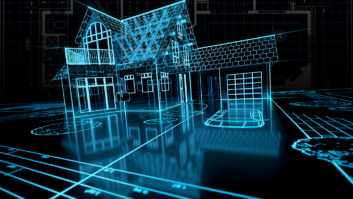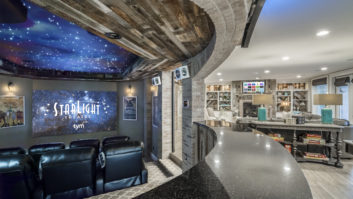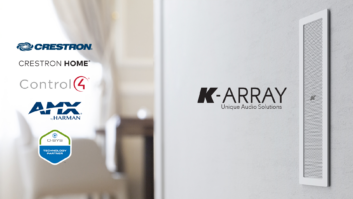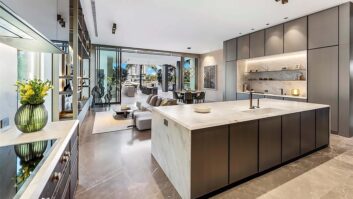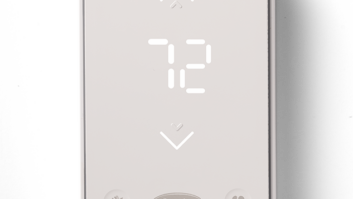Differentiation is the key to success in any market. For custom home builders, adopting cutting-edge construction techniques, architectural styles, and state-of-the art mechanicals can plant them a step ahead of their competition. More recently, the integration of smart home technology has been the calling card of trailblazing builders, attracting a new generation of buyers eager to experience the myriad benefits of a digital lifestyle. Builders want tech, their customers want tech, and integrators are in the catbird seat.
The following three custom homebuilders have taken the technology plunge, accoutering their show homes, client homes, and even their own personal residences with an impressive array of smart home equipment. By utilizing the same basic platform and portfolio of integrated products, and integration firm, each of the builders has been able to demonstrate and deliver a full range of features without any compromise of their signature home design, construction schedules, or customer satisfaction.
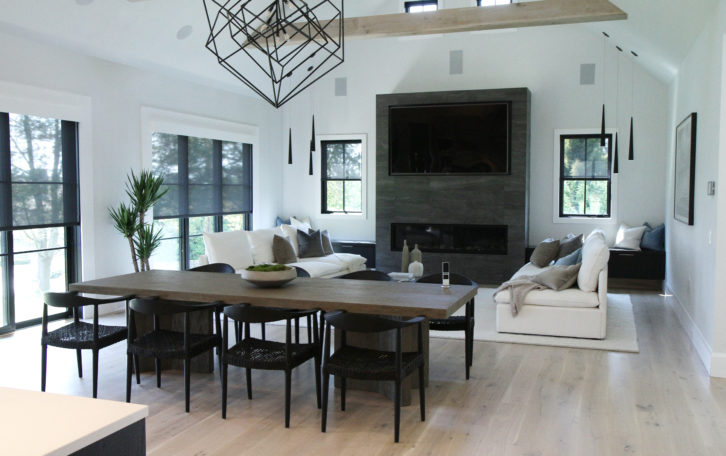
Builder: Greyrock Homes, Norwalk, CT
Systems Integrator: Stratatech Group, Norwalk, CT
Partnering with builders — what’s the first step? The answer has eluded systems integrators for a very long time. Integration firm Stratatech just may have cracked the code. Occupying a small corner of a high-end appliance shop, Stratatech runs a Control4 demo where consumers, as well as builders and designers, can see smart home technology in action, envisioning life in a smart home. Often, shoppers looking for a new stove, refrigerator, or other appliance visit the demo out of curiosity, as was the case with Jerry Effren, owner of custom homebuilding firm Greyrock Companies.
“Jerry visited the store initially for high-end appliances to put into his homes, but that eventually turned into requests for other technology,” relates Stratatech project manager Joseph Re. When Effren was approached by This Old House to film the progress of a construction project, he went to his go-to appliance provider for their advice on a security camera that could capture some of the footage. This original request for one camera soon grew to two more cameras, at which time Stratatech proposed to Effren and the This Old House production crew the inclusion of a complete Control4 system.
The idea became a reality, and the This Old House 2020 Idea House went from purely a display of modern construction and design to also highlight the use of intelligent lighting, motorized window treatments, security features, and audio/video distribution.
“While we certainly wanted our work to be noticed on camera, maintaining a discreet appearance of the technology was paramount,” relates Re. After filming, Effren would take up residence, so Stratatech had very specific requests to fulfill — first and foremost that the tech fit in with the clean lines of the home design. “We looked for discreet locations and applications for technologies, like recessing a keypad into the kitchen island and finishing it with a matching faceplate and buttons,” Re says.
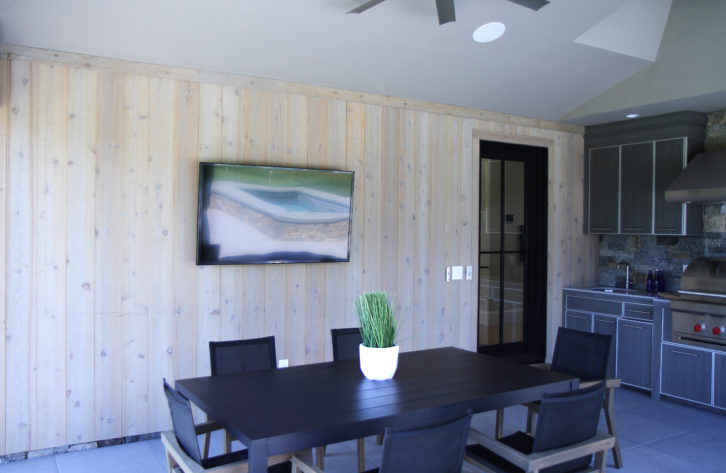
The cameras used for This Old House recordings were replaced with smaller, less noticeable models from Luma, and Stratatech personalized the programming of the Control4 EA-5 processor to the needs of Effren and his wife. For example, should someone exit the back door to the swimming pool, door sensors trigger a chime and a text message is sent to their phones. And since the family often hosts outdoor parties, Stratatech programmed one-touch activation of music to outdoor speakers and 4K video to a SunBrite TV from a Neeo remote or mobile app. Music and video can travel to multiple displays and architectural speakers inside the house, as well.
In the end, the simplicity of configuration and customization of the Control4 platform, coupled with the vast array of products in the Control4/SnapAV portfolio, allowed Stratatech to design an automation solution that performed well on camera and in real life, and ultimately cemented an ongoing relationship between Greyrock and Stratatech. “We’ve since added elements to Jerry’s house and have proposals out for a few other Greyrock projects,” Re says. “By demonstrating how simple the integration of technology can be during the This Old House project, we developed a great ongoing working relationship with Greyrock.”
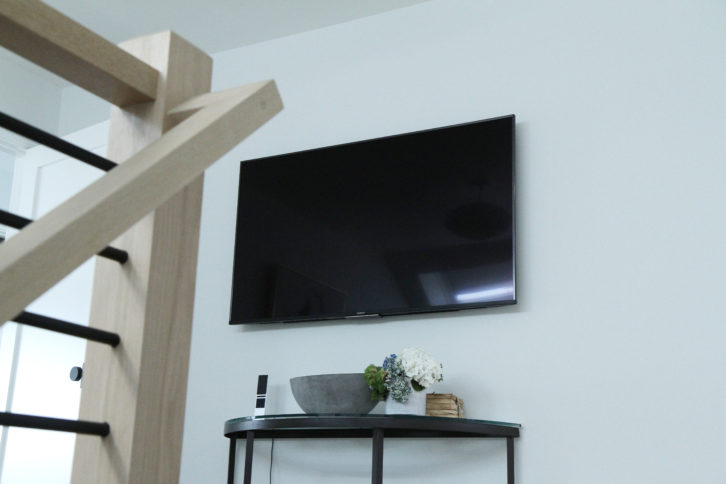
Builders: Kurtz Homes and Toscana Homes, Naples, FL
Systems Integrator: Premiere Music & Film Systems, Chicago, IL, and Naples and Boca Raton, FL
When an integrator has a deep understanding of the construction business, he’s often several steps ahead of the competition. Back this up with exceptional design, installation, and customer service, and progressive custom builders are more likely to come knocking. This winning formula has solidified Premiere Music & Film Systems as the preferred systems integration firm for more than one luxury custom home builder in the Naples, FL, area.
Despite the growing importance of technology to the comfort, convenience, safety, and enjoyment of a home, there’s still a bit of courting that needs to happen for integrators to get their foot in the door with builders, acknowledges Premiere vice president Robert Anderson. “Builders’ main concern is that they will be left holding the bag should the technology fail in a home,” he says. “We’ve been able to alleviate this common concern among builders through our high client retention rate.”
The fact that Anderson has an electrical contracting background doesn’t hurt. It’s how Toscana Homes became involved with Premiere in the first place. “Years ago, we had been contacted by a large commercial builder to construct his personal family compound, and requested that we include AV, and that we use their preferred commercial AV contractor, Premiere Systems,” relates Toscana Homes president and general manager Richard Compagnone. “Honestly, at the time I thought putting in any kind of technology was a bad idea. But this particular client was adamant, so we moved ahead with the plan, and per the client’s request called on Premiere to do the technology integration.” So began their long and fruitful partnership. Since that first project in 2006, Toscano Homes has used Premiere almost exclusively as its home tech provider. Today, this equates to a lot of work, as Compagnone figures about 70 percent of Toscana’s luxury million-dollar homes include some degree of AV and/or automation.
Another Naples-based custom builder and Premiere advocate, Kurtz Homes, includes technology into every home it builds. And, like Toscana, it bases its close relationship with Premiere on the company’s exceptional level of professionalism, reputation, and ability to work closely with and understand the needs of architects and other trades, while listening closely to client requests. “There is ever-growing competition among home systems integrators in our area,” says Kurtz Homes project manager Jereme Shaidle. “Premiere stands out from the rest because they make a point to get involved upfront with the architect to determine space allocations for elements like window headers for motorized shades, locations of keypads and touchscreens that make sense, and checking truss layouts for the integration of lighting components.”
In fact, lighting control has become somewhat of a calling card for Premiere. “It’s a category of home technology that builders can easily visualize and recognize as a practical home amenity,” says Anderson. For clients of both Toscana and Kurtz, Premiere nearly always designs a lighting package. “At the very minimum we put in controllable lighting,” says Shaidle. For Toscana, Anderson designs lighting systems as a courtesy. “This is a big benefit that resonates with our clientele and saves me from having to find a certified lighting designer,” says Compagnone. And again, the extent of the design always comes down to Premiere’s listening skills. In some homes, Premiere puts in a partial system that covers rooms on the main level. In others, every light is tied to the system.
No matter what Premiere provides to its builder partners, “their involvement relieves us from trying to be industry experts in the ever-changing world of technology,” remarks Shaidle. “We have an entire home to build, from site work, concrete, framing, HVAC, roofing, and more, all the way to putting the finish hardware on the cabinets. As a successful builder we need a partner that is dedicated to incorporating technology that helps our clients simplify their lives, and that follows up with ongoing customer service and support.”
Working with Other Trades: Interior Designers
By Sharon L. Sherman, Owner of Thyme and Place Design, thymeandplacedesign.com
Before I met Rick Trover of Interchange Technologies (interchangetechav.com), I had worked with other integrators who frequently walked all over my design in favor of “their work.” I just needed to find a team member, not a hot shot.
Here’s an example: I was working on a project where the client wanted a coffered ceiling in the same room as a projector and screen. It was easy enough to accommodate this, but I had to design around the projector to make it work. For the same job, we needed a wall with nine TVs above an electric fireplace. We couldn’t fit everything in as designed, so Rick and his team happily reduced the size of the TVs that were specified so that everything could fit.
There’s a give and take, and when the integrator-designer relationship is solid, we can do amazing things. It is always a matter of the best outcome for the client, and the client experience must always be first and foremost. Likewise, technology and design must complement each other and not overwhelm.
5 Quick tips for greater success
- All projects typically now have some type of technology-based inquiry from the homeowner. From whole-house control, shading, or lighting control, they’re looking for some level of integration. Helping me navigate these conversations is greatly appreciated.
- Personally, I am not an expert in the technology field and I tell my clients that, but I do have an integrator I always bring into the project. Tech is their wheelhouse, and we work together for the best outcome.
- While I am not an overly tech-savvy person, I am a quick learner, so don’t dazzle me with terms I am not familiar with but do tell me the why and how, and I will be good to go.
- Tech should integrate (no pun intended) with the design and not overpower it.
- Be part of the team, work to enhance the client experience, and bring your expertise to the project, and you will find yourself working with that designer or that team again and again.
